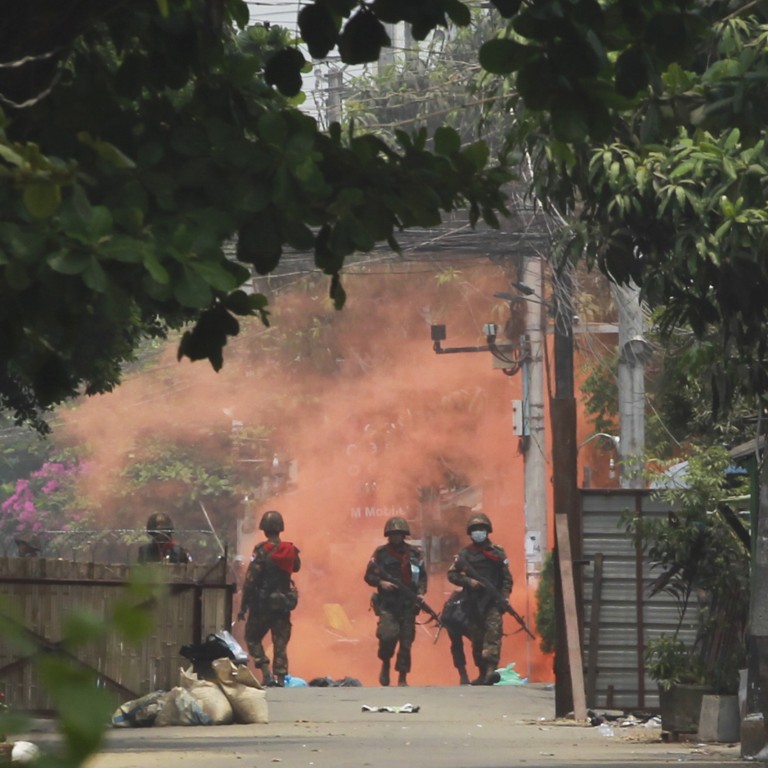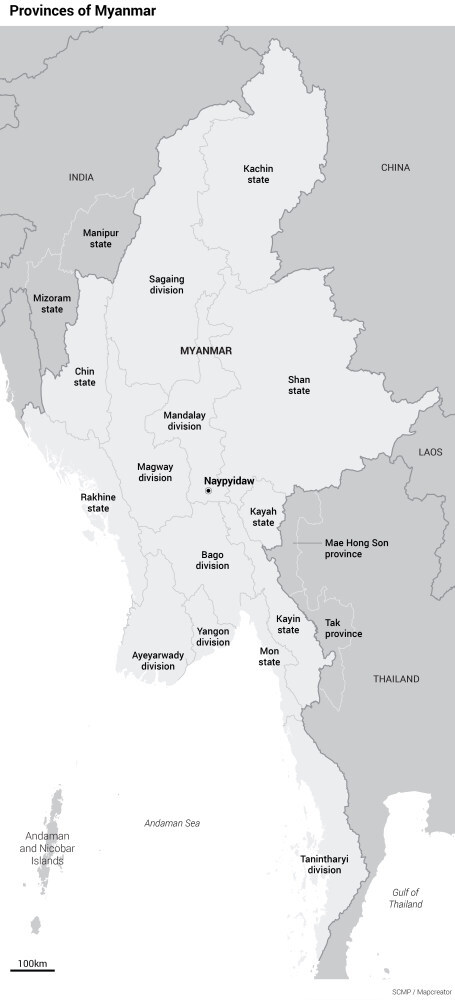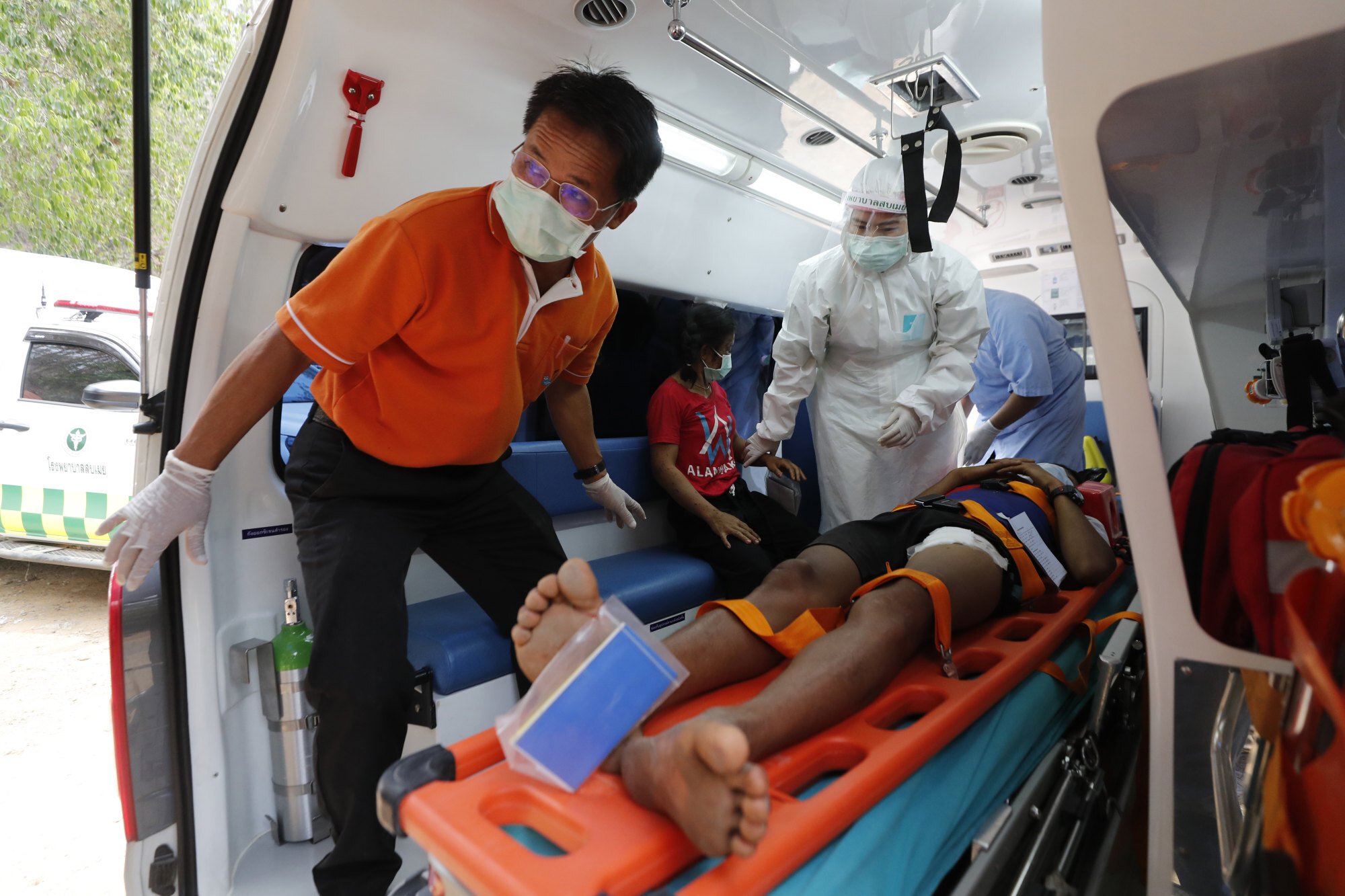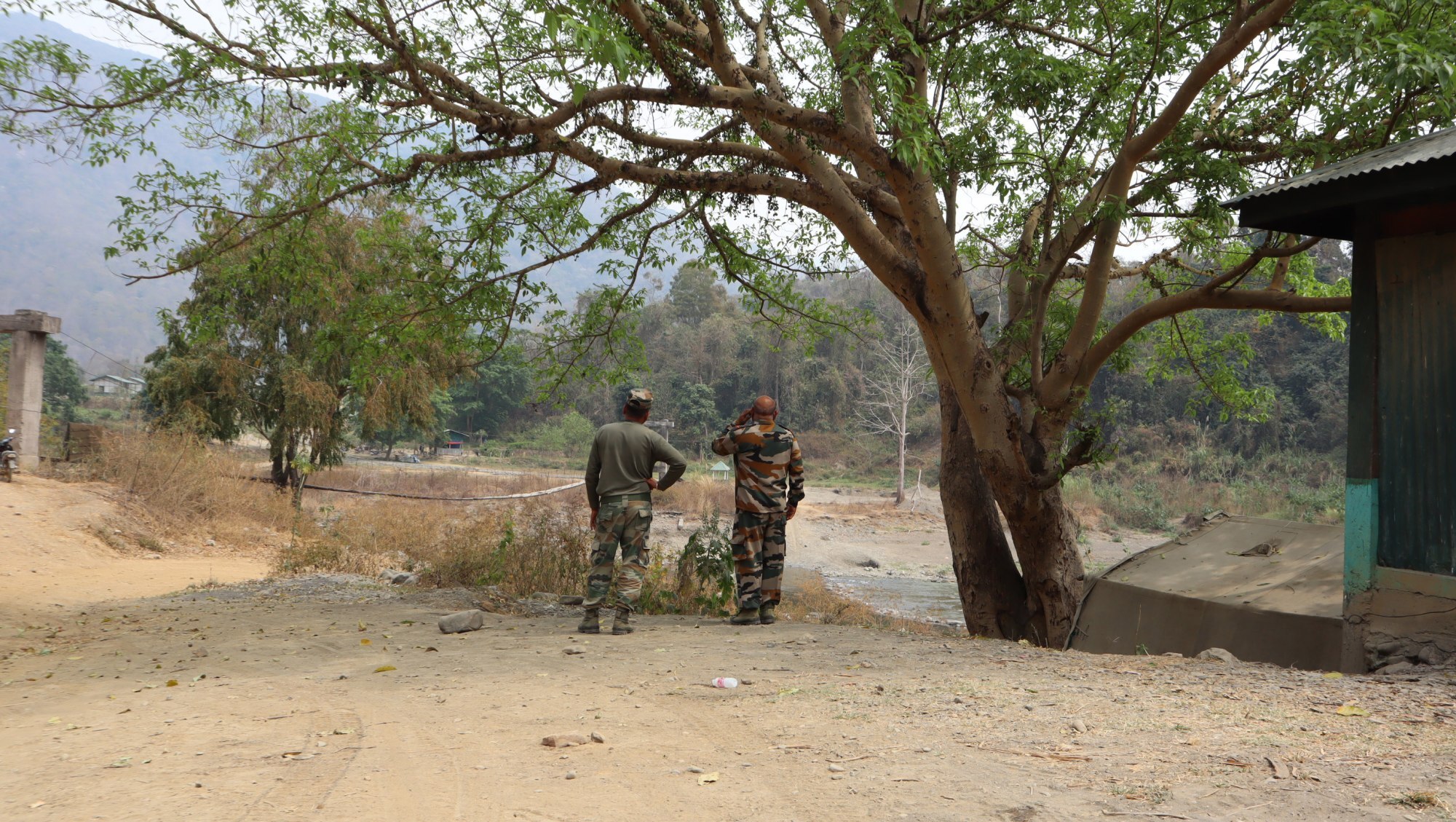
India, Thailand face looming refugee crisis as Myanmar violence sparks fears of civil war
- New Delhi and Bangkok have refrained from criticising the generals, and have had to counter accusations they are ignoring the plight of Myanmar’s people
- With more armed ethnic groups supporting the anti-coup movement, experts warn a civil war could spill across borders
New Delhi and Bangkok – which were among the eight foreign representatives in attendance at the junta’s Saturday commemoration of the resistance against Japanese occupation in 1945 – have held back from criticising the generals, and have had to counter accusations from activists at home that they are ignoring the plight of Myanmar’s people.

In India, a social media uproar castigating Delhi ensued after the government of the northeastern state of Manipur, which borders Myanmar, issued a note instructing district officials to “not provide any food and shelter” to refugees, ban civil society groups from doing the same, and only provide assistance to those who are injured and require medical help.
In Thailand, activist groups on Monday accused the government of pushing back more than 10,000 villagers from Myanmar’s southeastern Kayin state, home to the Karen ethnic community, after multiple air strikes over the weekend.
The bombings were seen as retaliation against the Karen National Union (KNU)’s military branch, the Karen National Liberation Army – one of Myanmar’s many armed ethnic groups that are seeking greater autonomy for their communities. The group had earlier attacked and captured an outpost belonging to the military, killing 10 soldiers.
Mark Farmaner, head of Burma Campaign UK, said thousands of people had been forced to return to the Ee Thu Hta displacement camp on the Myanmar side of the border. Thai NGO Friends Without Borders Foundation said some 8,000 civilians had fled into the jungle to hide, while another 3,000 had crossed the Salween river into Thailand’s northwestern Mae Hong Son province.
But the foreign ministry in Bangkok on Tuesday insisted this was not the case, and that Thailand had “provided assistance” to those that had entered its borders, while Thai Prime Minister Prayuth Chan-ocha told reporters there was “no influx of refugees yet”.
Could Myanmar’s ethnic armed groups turn the tide against the junta, with a little help from Beijing?
Spokesperson Tanee Sangrat had a day earlier pointed to how Thailand had traditionally provided aid to people from neighbouring countries who were fleeing from fighting or chaos. On Tuesday, he stressed that refugees were not being pushed back, and more than a dozen had received medical treatment at the border.
In a Monday video by Thai news agency The Reporters, hundreds of Myanmar villagers, including children, who identified as Karen were seen trying to make their way across the Salween river into Mae Hong Son province on foot and by boat, carrying bundles and baskets.
The video also showed barbed fences set up near the river bank. An elderly Karen man said they had been pushed back by the Thai military.

“We had to go back. We had no choice. Even when there were only old people, we were told to go back,” he said. “The situation is not good on the other side. The jets are flying and the Myanmar military is chasing us.”
Naw Eh Tah, who managed to cross the Salween river, described the moment the bombs hit.
“We didn’t hear the plane – if we did, we would have run,” the 18-year-old said from the small Sop Moei district hospital in Mae Hong Son. “By the time I realised what was happening, the explosion hit the roof of my house. When I got hit, I couldn’t walk – I had to climb to hide.”
Saw Lab Bray, 48, suffered shrapnel wounds all over his body when he was hit in Day Puh Noh.
“I tried to run away but the bombs dropped so quickly,” he said. “I fell on my side and was coughing blood. I’m afraid because I cannot run, I cannot move.”
Mae Hong Son’s governor Sitthichai Chindaluang on Monday said those who fled Myanmar after the military attacks would be asked to return home – adding that if they remained fearful, they would be given shelter, but only allowed to remain near the border.
AT ODDS
In India, which shares a 1,643km border with Myanmar, several hundred people have reportedly sought shelter in the northeastern states of Manipur and Mizoram, including police personnel who say they are unwilling to follow the junta’s instructions to fire on protesters.
Mizoram authorities have been at odds with New Delhi over its policy, with its top elected official Zoramthanga last week writing to Prime Minister Narendra Modi to say India could not “turn a blind eye” to the humanitarian crisis, and that the people of the state, given their ethnic ties with refugees from the Chin community in Myanmar, could not “remain indifferent to their plight”.
Myanmar security forces kill at least 114 after junta vows to strive for democracy
But after India’s Home Ministry told Manipur and two other states – Nagaland and Arunachal Pradesh – bordering Myanmar to not accord refugee status to anyone, as India was not a signatory to the United Nations Refugee Convention of 1951 or its 1967 protocol, Manipur turned eight arrivals back last Friday but provided hospital care to three others in the state capital of Imphal.
Responding to the social media outrage, the Manipur government on Monday asked officials to “disregard” its previous instructions regarding Myanmar refugees and stressed that the state government had taken all “necessary humanitarian steps”.
Imphal-based agriculturist Irom Singhajit – the brother of prominent activist Irom Sharmila, who observed a 16-year hunger strike to demand the repeal of an armed forces law – told This Week In Asia: “Manipuris are emotionally connected with people of Myanmar, and they will ensure that all kinds of help are extended to them even if the government changes its stance towards them again in future.”
Environmentalist Ram Wangkheirakpam urged the Manipur state government to “stand for democracy and insist the Indian government pressure the Myanmar military to restore democracy there”.
He said the authorities had always encouraged a free flow of trade between the people of Manipur and Myanmar, so it was “baffling” that they were now asking residents of the Indian state to take a hands-off approach in a time of crisis. “Manipur should be an all-weather friend of Myanmar because of their shared history and ethnicity,” Wangkheirakpam said.
Myanmar crackdown death toll tops 500 as protesters launch ‘garbage strike’
WORSENING VIOLENCE
There are hundreds, possibly thousands, of armed militias in Myanmar, which recognises 135 distinct ethnic groups, according to a report last year by Brussels-based International Crisis Group. Of those, around 20 ethnic armed groups have both political and military wings.
Lee Morgenbesser, a lecturer at Australia’s Griffith University who researches Southeast Asian politics, told Bloomberg there was a “distinct possibility of mass demonstrations cascading into civil war or interstate war”.
“Given the sometimes porous nature of Myanmar’s borders, along with the fact that the armed ethnic groups are not subject to state authority, it is likely that the crisis spills across international borders,” he said.

Preecharush said the refugee influx into Thailand would be larger than in the aftermath of the 1988 student uprising. “This round of conflict in Myanmar will be more protracted and on a larger scale,” he said.
In Tak, a Thai province across the border from Myanmar’s Kayin state that is located south of Mae Hong Son, local authorities are on alert for a looming civil war.
Chalerm Boonpornwong, chief executive of the Wale subdistrict administration in Tak, said while there were several armed ethnic groups operating in Myanmar territory next to the province, most of the area was under the control of the KNU: “The villagers, Thais and Myanmar people, who cross the border every day have heard rumours that the Myanmar military might come and burn the villages at any time.”
While Chalerm was unable to estimate the exact number of refugee arrivals in the coming weeks, he said Wale could accommodate around 1,000 people.
Myanmar security forces open fire on funeral as global condemnation grows over Saturday’s killings
He said refugee camps that were established in the 1980s – at the height of Myanmar’s political tension that sent scores of students and pro-democracy activists to Thailand seeking refuge – could resume.
Sai Purng, a 36-year-old from Myanmar’s Shan state who works at the Human Rights and Development Foundation in the northern Thai city of Chiang Mai, said there would be more refugees as fighting between the military and armed groups intensified.
Purng is from Shan state, where the armed rebel group the Restoration Council for Shan State, led by General Yawd Serk, has provided protection for those fleeing violence in other Myanmar cities.
“Those who were being chased by the military so they fled from Yangon, for example, asked for help from the group so as to escape the Tatmadaw’s grasp,” Purng said. “But most refugees who arrived in Thailand were from the border area, not from cities in Myanmar, because of distance.”
Additional reporting by Reuters, Agence France-Presse, Bloomberg and Associated Press



